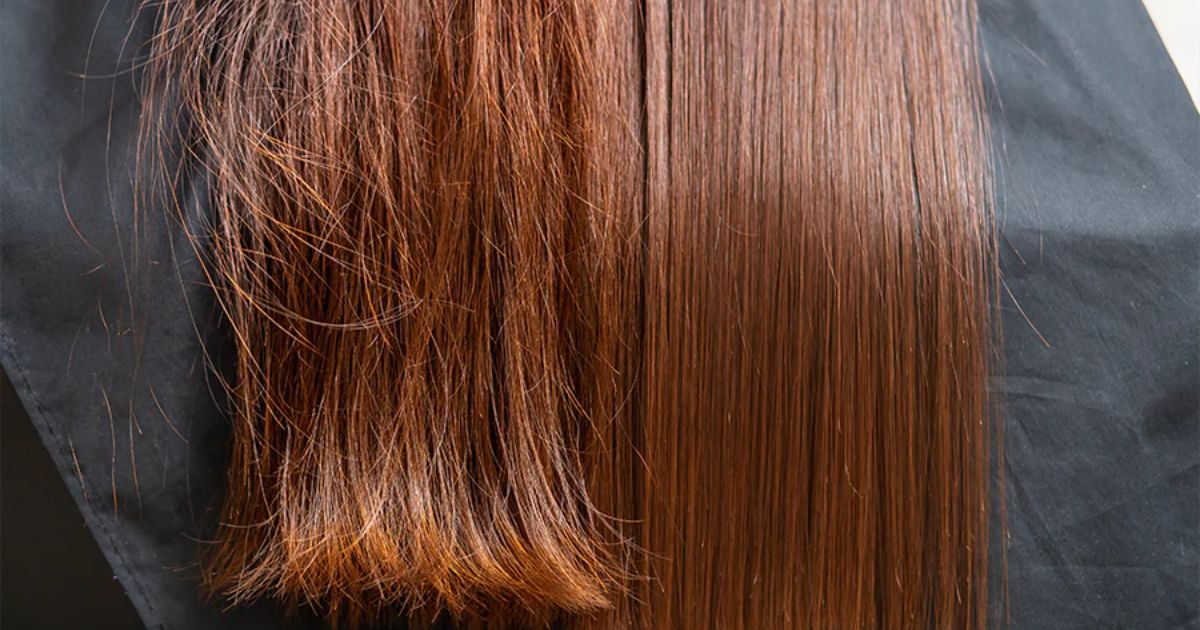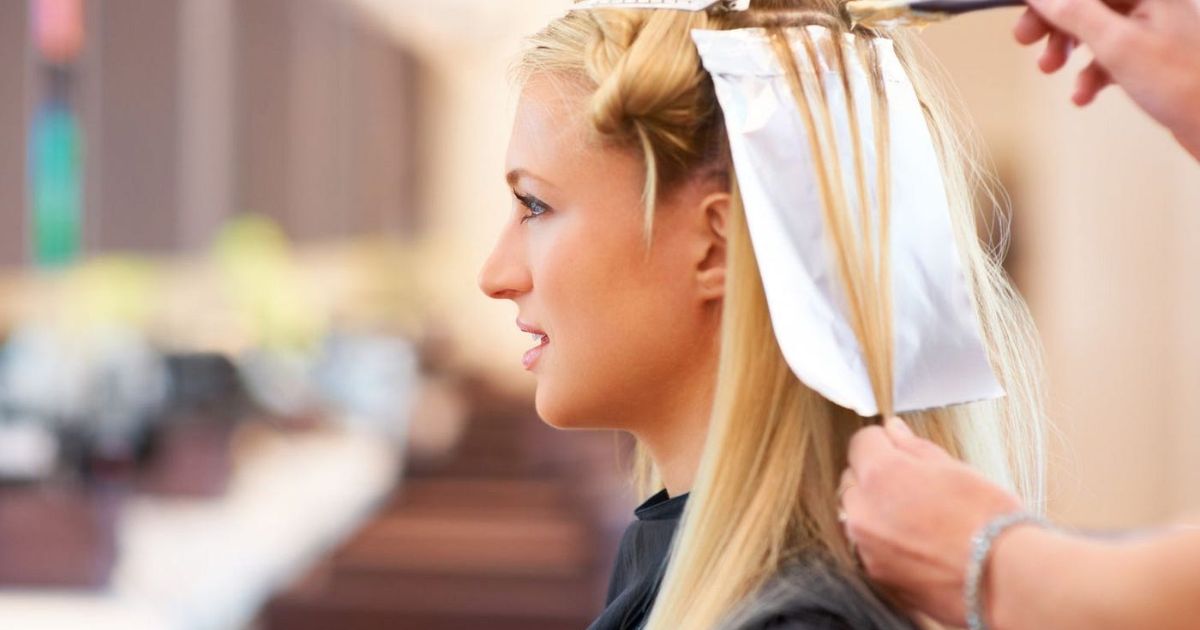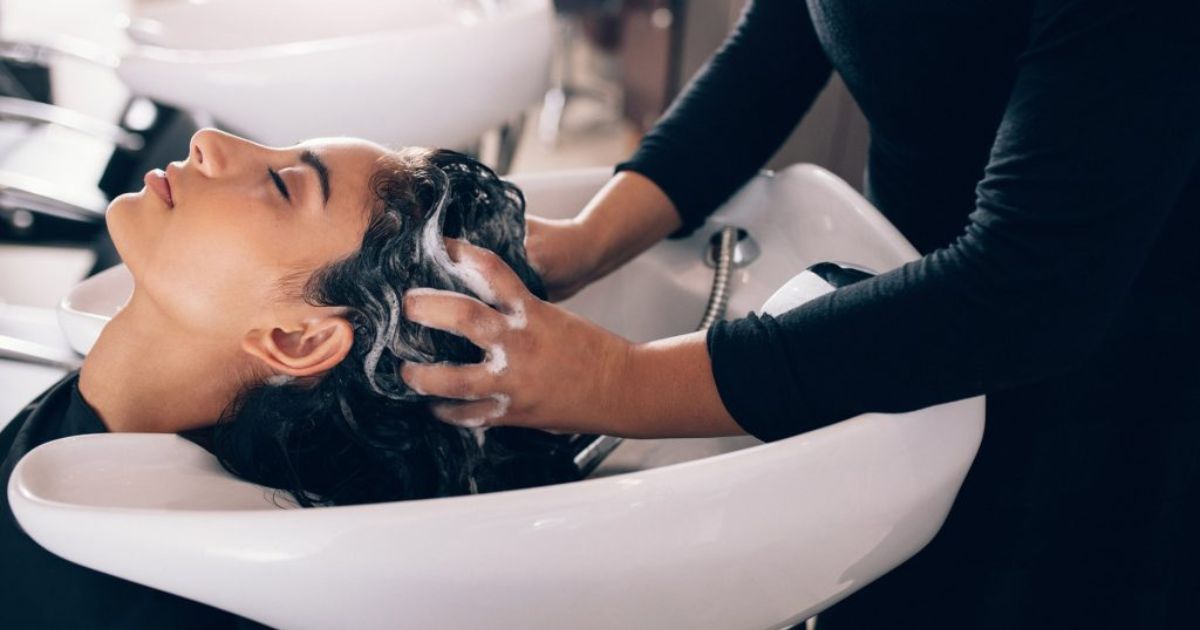Have you been experiencing and seeing a dry hair, split ends, or rough hair, after styling it? You may be experiencing heat damage. Most of us lose our hair and even have strands of hair when we are styling without protection. The positive thing is that you can fix, bring your strands to condition and make them strong with the proper maintenance. This paper will take you through the process of repairing heat-damaged hair, offer it some time-tested solutions, science-based information, and advice on how to avoid future damage to have your hair appear healthy and shiny once more.
WHAT IS HEAT-DANAGED HAIR?
Damaged hair is not merely a bad hair day, it is a hair that has been subjected to structural alterations due to excessive/occurring use of the heat styling tools or due to excessive roughness. Exposing them to a lot of heat causes the hair cuticle (the outer layer of protection) to become cracked thus causing loss of moisture and weakness. According to research conducted by American Academy of Dermatology it has been stated that close to 80 percent of women in the United States engage in some kind of heat styling on a weekly basis and this has increased the chances of damage significantly when no protection is applied.
Imagine it is toast, bread that is left in heat dries out and breaks. Same with your hair, it loses its elasticity and smoothness when it comes in contact with too much heat. This necessitates the learning how to repair heat damaged hair as a long term initiative towards the health of hair.
RECURRENT SIGNS AND SYMPTOMS OF HEAT DAMAGE
It is quite easy to know whether your hair is damaged or not by the sensation alone. Whenever you touch your strands and feel some roughness, you have a bunch of tangles and they just appear when you didn’t expect them or your hair just feels parched, despite using a lot of conditioner, then you could be confronting the issue of heat damage.

There is also split ends, hair breakage and even white nodules along the shaft which are small weak spots where your hair is almost on the verge of breaking. When your curls are no longer curly or when your straight hair all of a sudden becomes stringy, that is a sign that the protein of the hair (keratin) is damaged.
| Healthy Hair | Heat-Damaged Hair |
| Smooth surface of cuticle | Lifted cracked cuticle |
| Glossy, luminous surface | Mat, opaque surface. |
| Minimal tangling | Tangles / tangling easily |
| Keeps moisture away | Always dry, puffy frizzy hair |
SCIENCE OF HAIR AND DAMAGES CAUSED BY HEAT (KERATIN + MOISTURE LOSS)
The hair consists mainly of keratin, which is the protein that provides the hair with strength and flexibility. Keratin structure alters when when subjected to high temperatures, nearly the same way as boiling an egg which solidifies. This implies that your hair becomes unnatural in shape and strength.
Surplus heat also leads to loss of moisture leaving the strands dry and brittle. In a 2020 Journal of Cosmetic Science study, the researchers discovered that temperatures exceeding 450°F would cause irreversible damage to the keratin. That is why the heat styling best practices suggest maintaining the tools under this range of temperature to prevent the fact that permanent alterations would occur to your hair structure.
VARIOUS DEGREES OF HEAT DAMAGE: MILD, MODERATE, AND SEVERE
Every heat damage is different and being able to distinguish what stage your hair is in will save you time and frustration. The solution to heat damaged hair will depend on whether you have the slightest case of dryness, or severe structural damage. This is how to distinguish between them and the right approach.
Level 1: Mild Heat Damage
Minor damages are frequently presented with dry hair and loss of shine in a small degree. The strands can be rough to the touch though they can be handled. Deep conditioning treatments and gentle care are typically sufficient to bring about the lost moisture and softness until the damage is further developed.
Level 2: Moderate Heat Damage
The damage that is moderate is simpler to identify as you will notice split ends, hair break that was not previously, and tangles. The strength of the hair and elasticity can be restored with regular trims, protein treatments, and weekly hair masks.
Level 3: Severe Heat Damage
Extreme destruction is difficult to disregard. Your hair will become stringy, lose the twist or smoothness out of it, and even have white nodules on the shaft, an indication of extreme weakness. This stage frequently has a professional assistance, regularity of trimming and intense bond-building therapy as a means of regaining the shine and strength.
WHAT MAKES HAIR DAMAGED BY HEAT?
The most evident reason is the overuse of heat styling equipment or at extremely strong levels. Flat irons, curling wands and blow dryers can all be damaging to the hair cuticle when used improperly. The distance of the blow dryer and its temperature is important as well, as a blow dryer held too near will literally burn your hair.

The following are the most typical sources of heat damage:
- Overusing hot devices: The use of straighteners, curling iron, or blow dryers every single day makes the hair structure weaker in the long run.
- Hot preferences: The heat of over 400° to 450° F will cause permanent damage to the kertains and will rob the hair of its natural moisture.
- Close blow drying: Failing to maintain a safe distance or set to the maximum level results in scalded, brittle hair.
- Regular chemical treatments: Bleach, perms or relaxers weaken hair bonds and thus expose the hair to heat damage.
- Over-washing: Too much washing of the hair may result in the hair becoming dry, lack of elasticity and brittle.
- Friction damage: Towel drying Rough towel drying as opposed to microfiber towels may contribute to damage when used together with heat styling.
Considering trying to bend a paperclip and bend it, and bend it, and bend it, and bend it, at some point you break it. The same occurs to weak hair, which is subjected to heat and chemical stress on a regular basis.
NATURAL HOME REMEDIES ON HOW TO FIX HEAT-DAMAGED HAIR
There is no need to spend money in a salon to fix the heat-damaged hair, as some of the best solutions are in your kitchen. Paying attention to moisture loss, restoring of the hair protein and preservation of the hair cuticle will gradually make it strong and shiny. This is the list of the most effective at-home solutions that work.
Weekly Hydrating Hair Masks
Repair starts with moisture. Shea butter, coconut oil, or honey are some of the ingredients of a rich hair mask which can restore the hydration and straighten the coarse hair. Personally, a weekly coconut oil mask, in my view, is one of the simplest methods to begin healing your hair the mask has been my go to since it makes the hair soft and frizzed out on its own.
Monthly Protein Treatments
A protein treatment once a month will also give it extra support to rejuvenate lost keratin and reinforce weakly holding strands. Always be cautious though, excess protein may make the hair stiff and easily breakable and then a moisturizing conditioner should always be used to balance the situation.
Hot Oil Treatments
Hot oil treatment with argan or jojoba oil is very nourishing to the head and will eliminate frizz. Donning a warm towel especially after using oil will give the hair better penetration resulting in shiny and soft strands.

Walmart Natural Leave-In Conditioners
Aloe vera gel may also be used as a light leave-in gel that soothes the scalp, curbs frizz and is also useful in moisture retention. Regular use may enhance the general texture and enable stringy hair to be easier to handle.
THE PRODUCTS ARE THE BEST ONES TO REPAIR THE HEAT-DAMAGED HAIR (SHAMPOOS, MASKS, OILS)
The selection of appropriate products will either succeed your recovery process or fail. Instead of using sulfate-free shampoos which strip off natural oils, use them with moisture-giving conditioners. Deep conditioning masks that restore hydration can be used weekly and bond-forming products such as Olaplex are able to rejoin broken bonds at a molecular scale.
Oils that are light like argan or marula, will provide shine but will not burden the hair. Never leave-in treatments out – they coating the strands, make them less frictional, and help them to avoid damage in the future.
| Product Type | Benefit |
| Sulfate-Free Shampoo | Light cleansing, leaves the natural oils intact |
| Hair Mask | Provides lost moisture and softness |
| Bond-Builder | Rebuilds interior construction |
| Heat Protectant Sprays | Insures against future harm |
HOW TO USE A STEP-BY-STEP ROUTINE AND REPAIR HEAT-DAMAGED HAIR
Guideline to follow One after another to fix heat damaged hair.
The quickest method of making an actual improvement in the repair of heat damage is through developing of a systematic schedule. Unity is important in this case – imagine that this is a workout of your hair. Trims, hydration and smart styling habits can be used to slowly replenish strength and bring back the shine.
- Trim Damaged Ends First: Begin by trimming them to get rid of the split ends and prevent further damage of running along the shaft. This is similar to starting all over again with your new regimen that is healthy.
- Wet Hair With a Moisturizing Shampoo: Apply a sulfate free and moisturizing shampoo two or three times in a week. Excessive washing of the hair eliminates natural oils and results in drier hair. Never does it leave behind a single inch of space!
- Weekly Deep Conditioning Mask: Conditioner is a must-have – it closes the hair cuticle, smoothes coarse hair and de-tangles. Apply rich deep conditioning mask once a week on the hair to restore the loss of moisture and elasticity.
- Apply a Leave-In Conditioner: In my view, the most crucial process that you should not omit is the use of a leave-in conditioner. I use it as a secret to maintaining hair that is hydrated, manageable and with protection throughout the day.
- Air-Dry When Possible: Air-dry your hair so as to limit heat exposure. In case of the necessity to use a dryer, maintain a safe distance and temperature of a blow dryer – maintain a minimum distance of at least 6 inches and set the heat at a low or middle level.
- Apply a Heat Protectant Before Hairdressing: Should you have your hair done, one should not heat above 350° F and the sprays should be applied first with the heat protectant sprays. This provides a coating to your hair, which minimizes the loss of moisture and breaks of hair.
THE QUESTION OF HOW LONG IT TAKES TO REPAIR HEAT-DAMAGED HAIR
Patience is key. Mild damage has the potential of improving after one or two months as long as you are very careful. Mild injuries typically require three to six months to heal whereas serious injuries can take up to one year before complete recovery.
The CDC says that hair grows half of an inch monthly, and thus it takes time to recover what is lost to hair cuts. Keep to your course and reward yourself with little progress such as less breakage and lighter texture.
MEDICAL INTERVENTIONS OF SEVERE HEAT DAMAGE
Home remedies are not always sufficient and expert assistance can rescue you. Salons have keratin treatments, bond repair services and glossing treatments that restore the strength and revive shine and strength. In my case it is important to have a professional trim every 8-10 weeks, as this is the only way to prevent the appearance of split ends and to maintain the appearance of healthy hair.

An appointment with a trichologist (a specialist in scalp and hair) may help reveal the underlying causes of the problem, such as nutritional deficiency or hormonal disproportions that would cause weak hair. The worst thing is sometimes a wash of hair is the only way out to clear all the bad stuff and begin anew.
PREVENTION OF HEAT DAMAGE IN THE FUTURE
It is not difficult to prevent things that are difficult to fix. Never forget to spray your hair with heat protectant, and ensure the setting of the temperature on your equipment is low. The professionals suggest 300-350°F and 350-400°F, respectively, in fine and thick hair.
Wet towels Try to air dry and use microfiber towels and a satin pillowcase to minimize friction. Test no-heat hairstyles like braids or twists to have a break on your hair. Regular prevention hair care measures will make your hair strong and healthy.
FAQs
1. Is it possible to fix the hair which was damaged by heat?
Yes! Light to moderate damage could be repaired using deep conditioning, protein treatments and regular moisture care. The extreme cases can be subjected to trimming and professional procedures.
2. So what is the time of repairing hair that has been damaged by heat?
Mild cases resolve in 1-2 months and acute cases with hair breakage and split ends may take 6-12 months to grow out with proper care and usage of hair masks.
3. What are the most suitable products in case of heat-damaged hair?
Find sulfate-free shampoos, bonding products such as Olaplex, moisturizing conditioners, leave-ins, heat protectant sprays, etc., in order to avoid additional damage.
4. Would home treatments deal with the problem of heat-damaged hair?
Yes. Hot oil treatments, aloe vera and coconut oil are some of the natural remedies that can enhance softness and add back the shine and strength provided they are used consistently.
5. How can I avoid heat damages in the future?
Turn the heat down, maintain distance and temperature of blow dryer, spray hair with heat protectant, dry hair when it is air-dried, and sleep on a satin pillow case.

 Medically reviewed by
Medically reviewed by